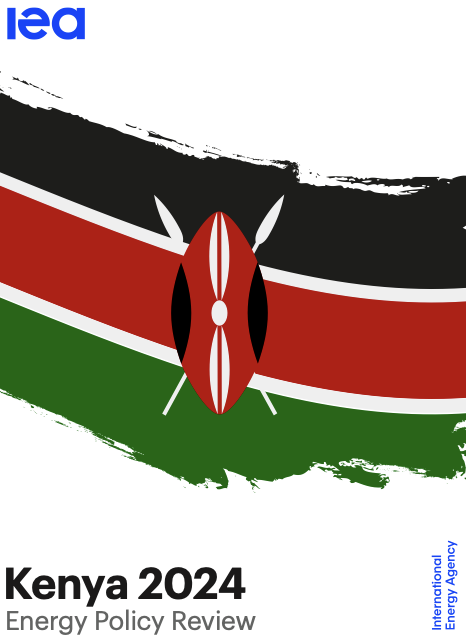Kenya 2024 Energy Policy Review
Prepared By International Energy Agency (IEA) - 2024The International Energy Agency’s (IEA) Energy Policy Review 2024 provides a comprehensive analysis of Kenya’s energy sector, recognizing the country’s significant strides in expanding electricity access and renewable energy deployment. The report notes Kenya’s ambitious goal of achieving universal electricity access by 2030, supported by grid expansion and off-grid solutions such as solar-powered mini-grids, which currently serve one in five households. Kenya’s electricity generation is dominated by renewable sources—geothermal, hydro, wind, and solar—comprising nearly 90% of the energy mix, with geothermal alone accounting for about one-third of installed capacity.
The review highlights major projects like the Lake Turkana Wind Farm, Africa’s largest, and the country’s cost-effective geothermal developments. Clean cooking access has improved from 10% in 2013 to over 30% in 2023, though many rural households still rely on polluting fuels; the Kenya National Cooking Transition Strategy aims for universal clean cooking by 2028. The report also discusses ongoing efforts to modernize and expand the electricity grid, including new regulations encouraging private investment in transmission and distribution. Challenges remain, such as high power losses and the need for better grid management, with smart grid technologies being explored as solutions. Overall, the IEA concludes that Kenya’s strong policy framework and renewable energy potential position it well to meet its long-term energy and development goals, fostering a sustainable, inclusive, and resilient energy future.
The review highlights major projects like the Lake Turkana Wind Farm, Africa’s largest, and the country’s cost-effective geothermal developments. Clean cooking access has improved from 10% in 2013 to over 30% in 2023, though many rural households still rely on polluting fuels; the Kenya National Cooking Transition Strategy aims for universal clean cooking by 2028. The report also discusses ongoing efforts to modernize and expand the electricity grid, including new regulations encouraging private investment in transmission and distribution. Challenges remain, such as high power losses and the need for better grid management, with smart grid technologies being explored as solutions. Overall, the IEA concludes that Kenya’s strong policy framework and renewable energy potential position it well to meet its long-term energy and development goals, fostering a sustainable, inclusive, and resilient energy future.
Document





